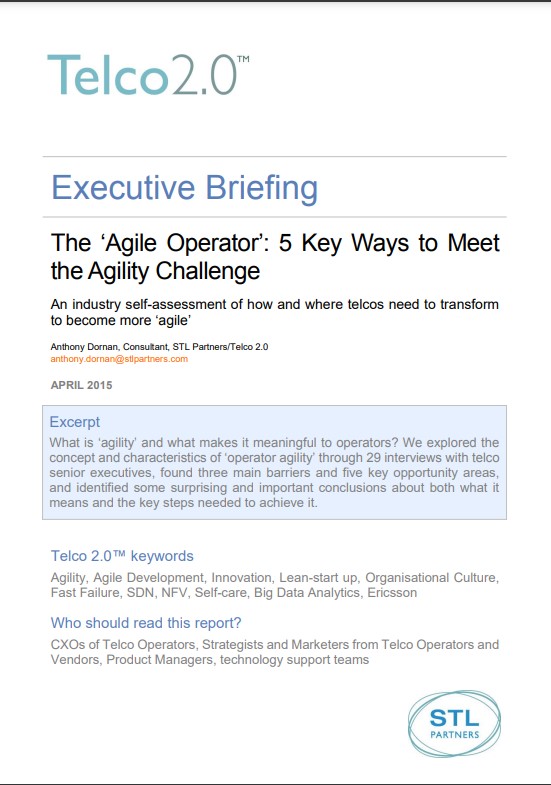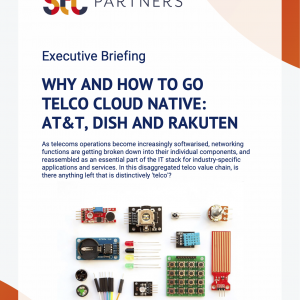The ‘Agile Operator’: 5 Key Ways to Meet the Agility Challenge
£1,000.00 excl VAT
What is ‘agility’ and what makes it meaningful to operators? We explored the concept and characteristics of ‘operator agility’ through 29 interviews with telco senior executives, found three main barriers and five key opportunity areas, and identified some surprising and important conclusions about both what it means and the key steps needed to achieve it.
Description
Format: PDF filePages: 48 pagesCharts: 21Author: Anthony DornanPublication Date: April 2015
Table of Contents
- Executive Summary
- Understanding Agility
- What does ‘Agility’ mean?
- Barriers to (telco) agility
- “Agility” is an aspiration that resonates with operators
- Where is it important to be agile?
- The Telco Agility Framework
- Organisational Agility
- The Agile Organisation
- Recommended Actions: Becoming the ‘Agile’ Organisation
- Network Agility
- A Flexible & Scalable Virtualised Network
- Recommended Actions: The Journey to the ‘Agile Network’
- Service Agility
- Fast & Reactive New Service Creation & Modification
- Recommended Actions: Developing More-relevant Services at Faster Timescales
- Customer Agility
- Understand and Make it Easy for your Customers
- Recommended Actions: Understand your Customers and Empower them to Manage & Customise their Own Service
- Partnering Agility
- Open and Ready for Partnering
- Recommended Actions: Become an Effective Partner
- Conclusion
Table of Figures
- Figure 1: Regional & Functional Breakdown of Interviewees
- Figure 2: The Barriers to Telco Agility
- Figure 3: The Telco Agility Framework
- Figure 4: The Agile Organisation
- Figure 5: Agile Software Development
- Figure 6: What’s Stopping Telco Agility?
- Figure 7: The Importance of Agility
- Figure 8: The Drivers & Barriers of Agility
- Figure 9: The Telco Agility Framework
- Figure 10: The Agile Organisation
- Figure 11: Organisational Structure: Functional vs. Customer-Segmented
- Figure 12: How Google Works – Small, Open Teams
- Figure 13: How Google Works – Failing Well
- Figure 14: NFV managed by SDN
- Figure 15: Using Big Data Analytics to Predictively Cache Content
- Figure 16: Three Steps to Network Agility
- Figure 17: Launch with the Minimum Viable Proposition – Gmail
- Figure 18: The Key Components of Customer Agility
- Figure 19: Using Network Analytics to Prioritise High Value Applications
- Figure 20: Knowing When to Partner
- Figure 21: The Telco Agility Framework
Technologies and industry terms referenced include: agile development, agility, big data analytics, customer-centric, Ericsson, Fast Failure, Innovation, internal processes, Internet of Things, IoT, lean-start up, legacy systems, network optimisation, nfv, organisational culture, organisational structure, OSS/BSS, OTT, product development, SDN, self-care, service creation, Virtualisation


